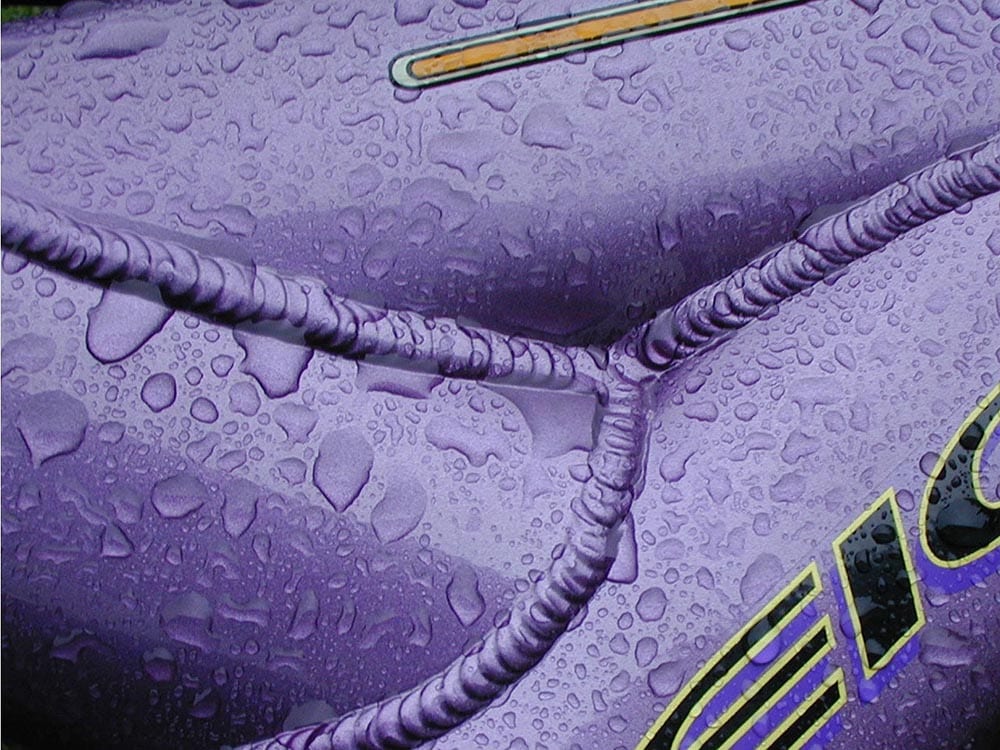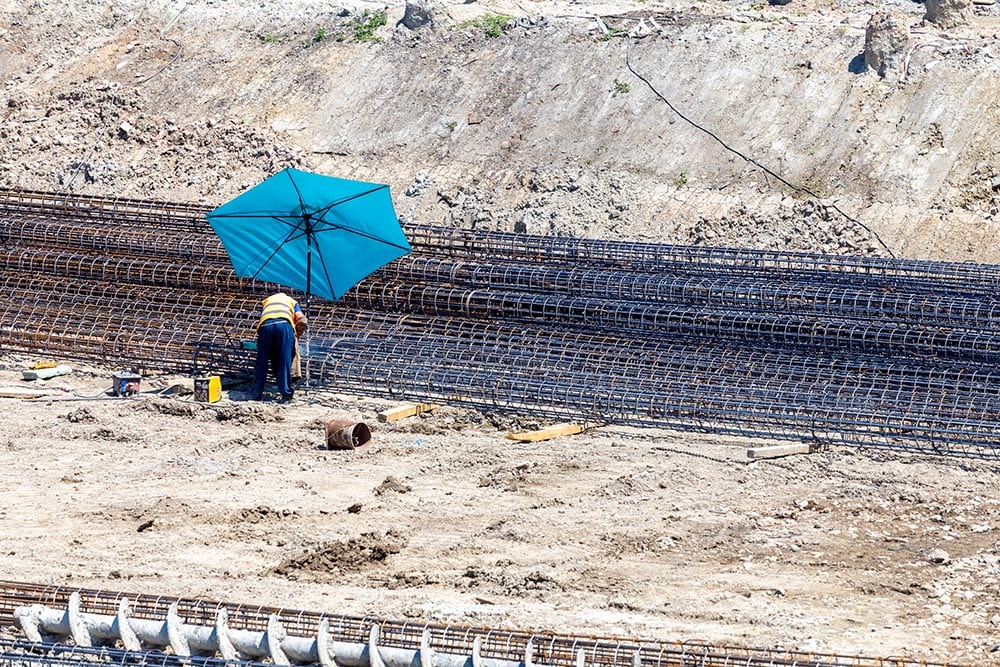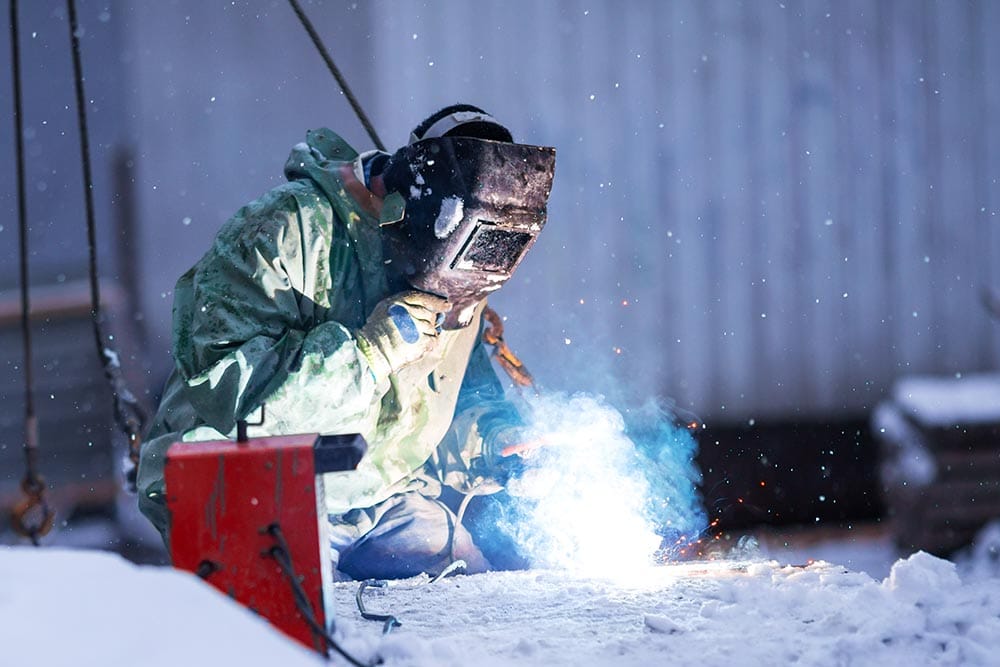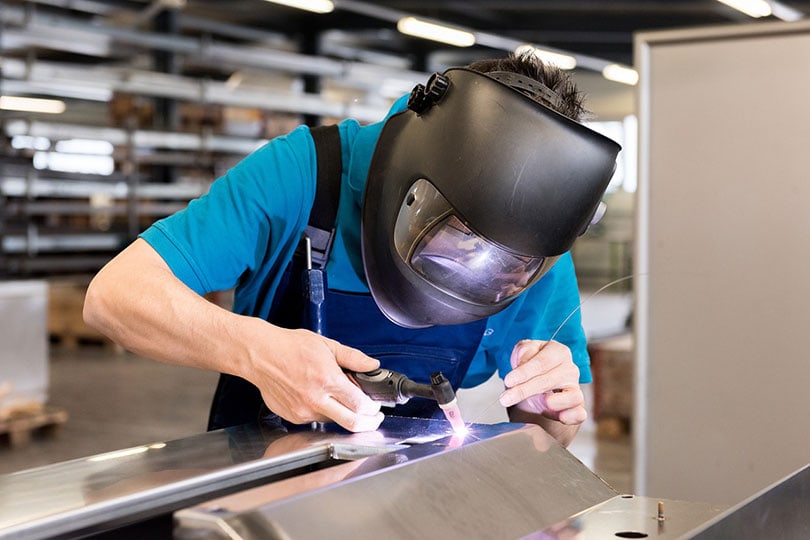Can You Weld in the Rain? The Surprising Answer!
Last Updated on

Although it is possible to weld in the rain, practically, it is such a risky task. Welding equipment generates a lot of energy, so there’s always the risk of being electrocuted. There is amperage traveling via your leads to the weld, as well as amperage running back into your machine from the ground lead. The current the electrode puts into the metal must return to your machine via the ground lead.
Welding in the rain can be dangerous because the water can conduct electricity and cause shock or burns. If you must weld in the rain, be sure to wear protective clothing and take precautions to avoid electrical hazards.
In this article, we will discuss the dangers of welding in the rain, the best ways to protect yourself and your equipment, and how to set up for welding in the rain.
So, if you’re planning on doing any welding in wet weather, read on for everything that you need to know!
Dangers of Welding in the Rain
When there is moisture present, the welding current tends to go further. You may often feel the voltage attempting to go up your arm if you’ve ever welded with damp gloves. This startling effect may be produced even by moist palms in the summer. The hazard derives from the fact that the welds’ electricity may readily flow through any type of moisture.
All welds are made in this large current loop, whether MIG, stick, or TIG welding. When welding on dry metal, the possibilities of being electrocuted are quite low. The current will flow easily across the metal if you have strong ground connections and good equipment.
Because all the steel is wet while welding out in the rain, the welding current may travel quite a distance. Your coworkers may also an get electrical shock as a result of this.
Underwater welding is a clear example of the dangers of shock. The arc’s energy will flow freely underwater if underwater welders neglect to put up their ground clamp. This increases the chances of being shocked, and all the weld voltage will enter the welder’s body.

Dangers of Welding with Wet Equipment
Wet welding equipment, in addition to the hazards of wet clothes and electrical shock, can be a major issue.
Most welding equipment isn’t built to operate in wet conditions. Although engine drives can operate in adverse weather, water can enter the machine’s vents, causing electrical difficulties. Although these engine components are more durable than their smaller counterparts, they are not watertight.
Engine drives, for those who are unfamiliar, are gas-powered engine machines that provide welding current. They may be installed on a vehicle or a trailer to enable mobile welding.
Welding in the rain is difficult for smaller multi-process and MIG welders. These machines are designed to be used in a dry environment.
Because the board and wiring on these devices are expensive to replace, operating them in wet weather is a terrible idea. If the problem is water damage, welding firms will not fulfill a warranty claim.
In the rain, having defective leads might be an issue. Water might get into your leads or wires if they have cuts or damage. This might cause the welder to experience electrical shock, as well as damage to the welding machine.
The rubber covering on leads is long-lasting; however, it may have small cuts after a time. If you have to weld in the rain, ensure your wires and connections are in good condition.

Can You Weld Wet Metal?
Welding wet metal is a dangerous procedure. Water can serve as a short between the negative and positive polarities, leading you to get zapped instead of passing through the ground plug on your welder. Before welding, ensure the metal is absolutely dry.
When it comes to electricity, metal and water are both excellent conductors; combining them while welding is not a smart idea. If you plan to weld on it, your chances of being shocked, or worse, killed, increase substantially.
Can You Weld in the Snow?
It is possible to weld in the snow. However, cold weather causes welds to cool faster, making them more susceptible to breaking during and after welding. To avoid this, use a flame to heat the metal in the area you’ll be welding to at least 50 degrees Fahrenheit.

How to Safeguard Yourself While Welding in the Rain
Now that we know it’s harmful to weld in the rain, there are a few things you can try to safeguard yourself:
Use the Appropriate Gear
If this is the case, you’ll want to be sure you have all of the necessary equipment before starting to weld. You need appropriate work boots with strong rubber bottoms to protect you from the elements. If you’re standing in water, rubber boots will prevent you from grounding.
To protect your skin from the welding gun, you’ll also need a dry pair of heavy welding gloves. If it’s raining hard, put on thick rubber gloves.
You don’t want any part of your body to be exposed to the arc or the sparks.
Countercheck Your Ground Clamp and Lead
Next, look for any cracks or rips in your weld ground clamp and lead cable. All power travels through these wires, and if any of them go exposed, you may be electrocuted.
Wrap or replace the cable with electrical tape to remedy the problem. Also, be certain that none of these wires is submerged in water.
Use a Cover
You can also use a cover to protect yourself while welding. This problem might be solved with something as easy as an umbrella or a plastic sheet.
This will keep the welding surface dry, resulting in a stronger and more attractive weld.
Also, try to shield the welder from the rain. It may or may not cause a shock, but the rain may cause significant damage to your welder.
Evaluate Your Surroundings
Finally, before you begin welding, take some time to examine your surroundings. It’s crucial to keep an eye out for things like water ponds and anything you shouldn’t touch when welding.
Before you begin, decide where you will stand and how you will perform the task. Having a strategy in place will safeguard you and everyone else.
Postpone the Task or Do It Indoors
In this circumstance, the best thing you can do is postpone the task entirely. I understand that this is not always practical, especially if you have a profession that needs you to work outside, such as a farmer or someone who works in a shipyard.
However, if you’re welding anything in your leisure time, such as a vehicle frame, it will be ideal to wait till the weather improves.
If you can’t postpone the task, try to bring it indoors and out of the weather if at all feasible.
Welding indoors helps you to better manage the atmosphere and produces better welds since you won’t have to worry about the wind blowing away your shielding gas.
However, this is not always possible because certain items are simply too large or heavy to lift and bring inside. Regardless, take your time. Welding in the rain is more difficult than welding in dry conditions. So, it’s important to go slow and be careful.

When You Should Sidestep Welding
You may believe that the only welding concern you need to have when it comes to water is rainstorms. There is, however, more to be concerned about than just rain. It’s not just direct rain contact that puts you at danger of being shocked; any wetness can do the same.
Avoid the following altogether:
- Stepping in a pond of water
- Operating without gloves
- Operating with wet/sweaty hands
- Operating in extremely humid conditions
Final Thoughts
Welding is a procedure that requires high levels of precaution to avoid hazards, including electrocution. Although it is possible to weld in the rain, it is a dangerous procedure as one is susceptible to deadly electrocution.
If it is a must to weld while it’s raining, it will be ideal if you consider putting a shed in the working area and also putting on the appropriate gear.
Featured Image Credit: PublicDomainPictures, Pixabay
